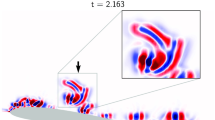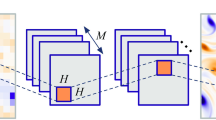Abstract
Methods of analyzing and interpreting velocity-field data (both two- and three-dimensional) to understand the kinematics, dynamics, and scales of turbulence are discussed. Reynolds decomposition and vorticity are traditionally used; however, several other methods, including Galilean (constant convection velocity) and LES decompositions (low-pass filtering), in conjunction with critical-point analysis of the local velocity gradient tensor, reveal more about the structure of turbulence. Once the small-scale structures have been identified, it is necessary to assess their importance to the overall dynamics of the turbulence by visualizing the motions they induce and the stresses they impose both on other small-scale vortices and on the larger-scale field.
Similar content being viewed by others
Author information
Authors and Affiliations
Additional information
Received: 31 May 1999/Accepted: 24 October 1999
Rights and permissions
About this article
Cite this article
Adrian, R., Christensen, K. & Liu, ZC. Analysis and interpretation of instantaneous turbulent velocity fields. Experiments in Fluids 29, 275–290 (2000). https://doi.org/10.1007/s003489900087
Issue Date:
DOI: https://doi.org/10.1007/s003489900087




